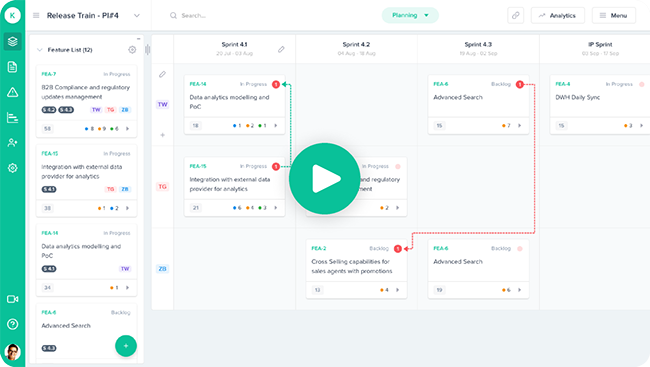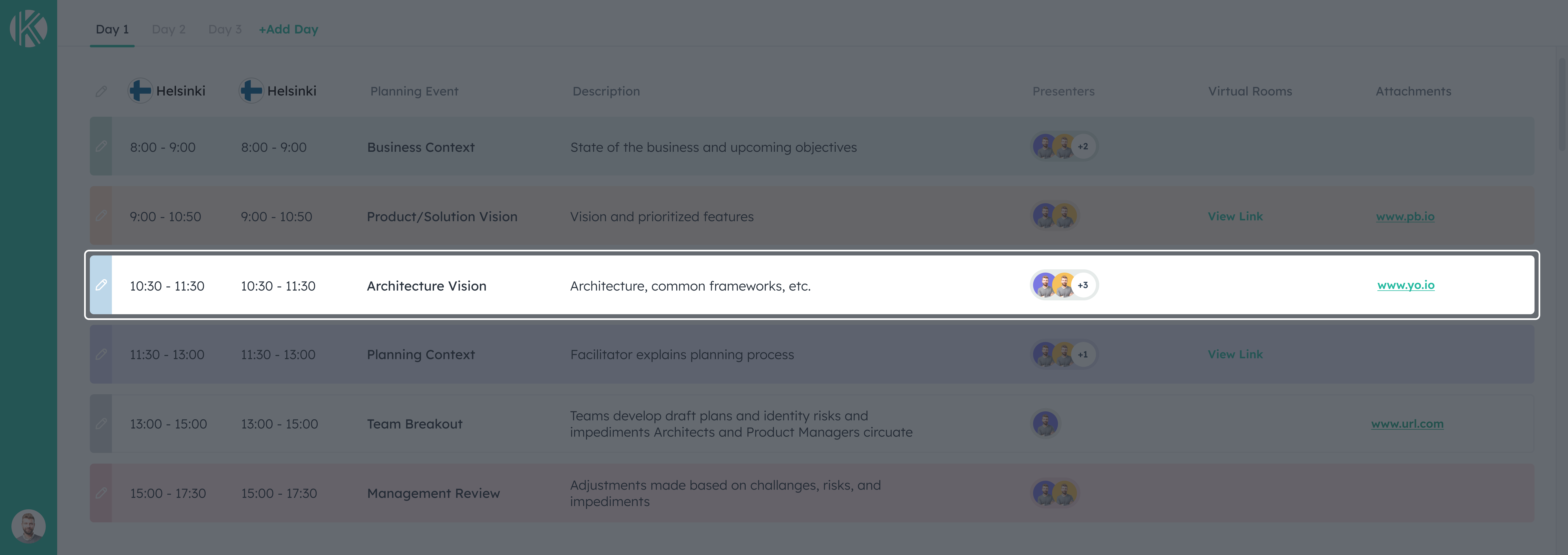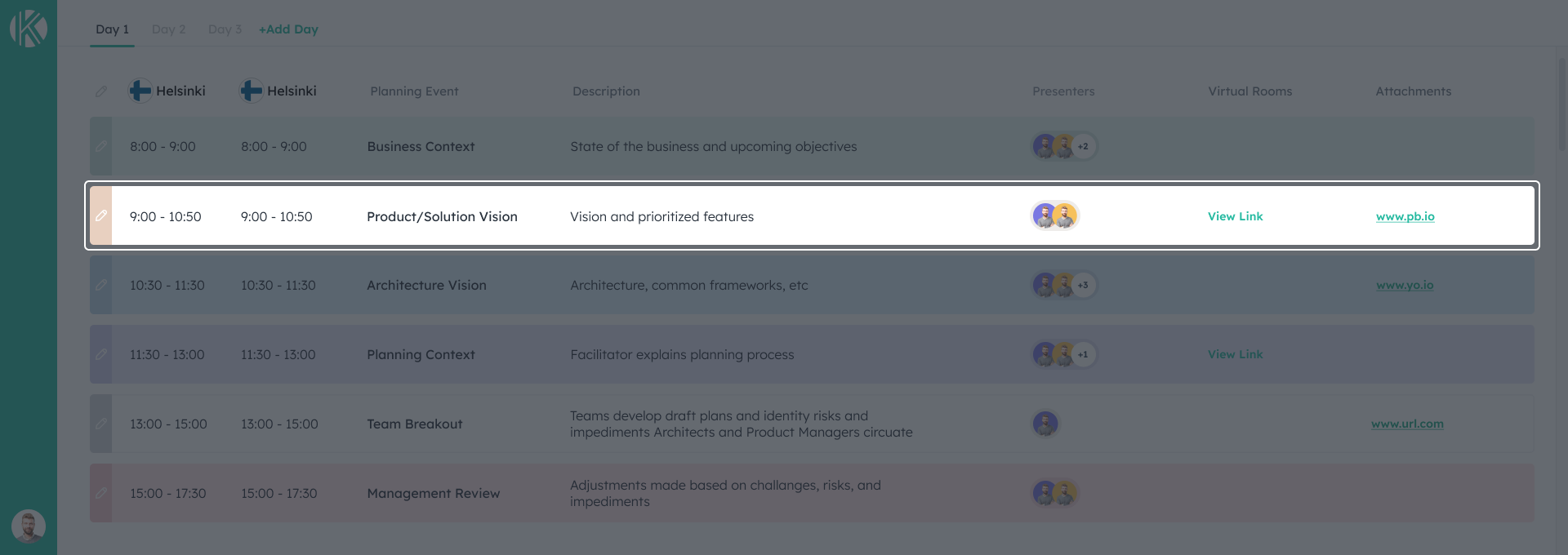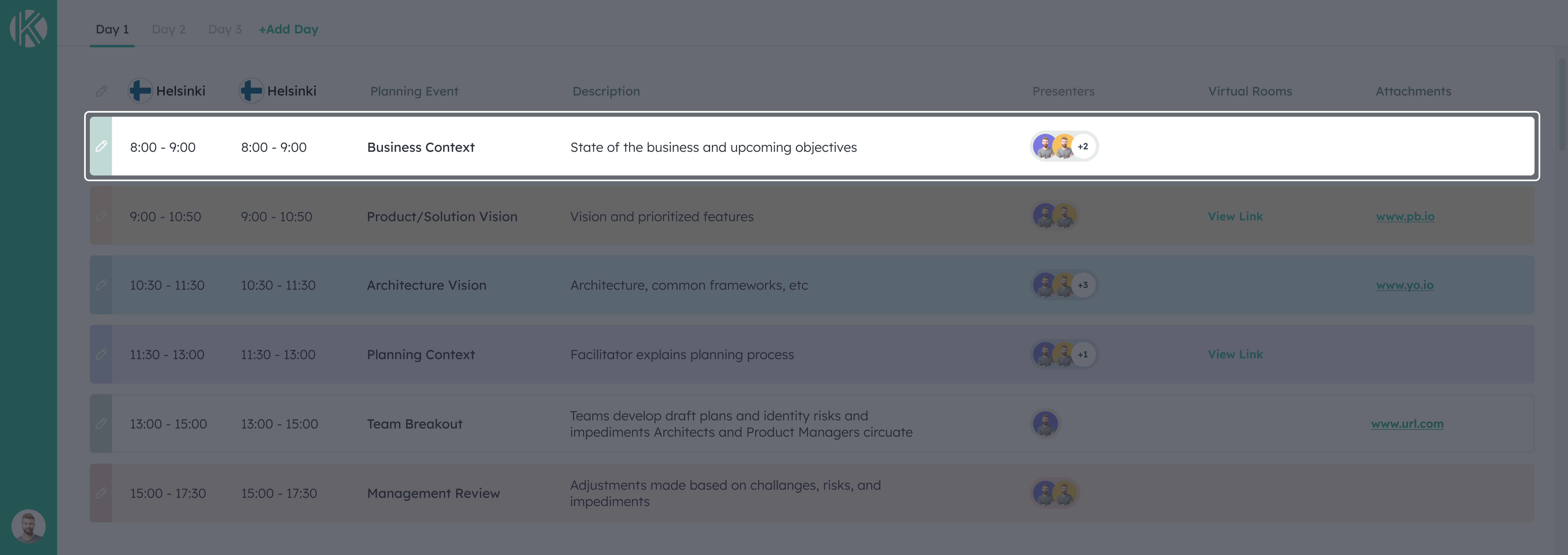The CoronaVirus Pandemic has unexpectedly and massively affected life as we know it, all over the world. Lockdowns have been enforced that have restricted gatherings and diminished human contact, making it impossible for most of us to go about our daily lives and working practices. For individuals who were required to travel for alignment the strict travel restrictions have brought this to a crashing halt!
People that are fortunate enough to be working in software development or any tech-related company with a solid agile framework implemented, such as the Scaled Agile Framework (SAFe), are still going about their day to day tasks by working from the comfort of their home.
But how will you be able to conduct a PI Planning session, that is a cornerstone event for SAFe, in the absence of face to face interactions? How will all the teams be coordinated now that they are all confined to their homes? Where will you be able to map out your PI objectives, risks, and other outputs when you do not have a physical board?
After reading this article, you will have attained an answer to these questions and would be relieved to know that having a PI Planning session in this harsh time is not a problem.
We will discuss the six key aspects that are described in the recently posted article on the Scaled Agile Framework’s website, which guides on how to conduct a PI Planning session with distributed teams. Secondly, we will discuss which tools to use that will allow you to conduct a PI Planning session effortlessly.
1. Planning Location
The idea is to bring together the teams as much as possible to one location. With the Covid restrictions, the opportunity for this is less. Consider small pockets of teams, particularly if they are within the same geographical locations, meeting in various clusters or offices. With small groups, it would not only be easier to social distance, but directed focus will be more intensified. If individuals of the same team are spread across different locations, then that can create a problem. Ideally, teams that are strongly dependent on each other need to be together. But to simplify the management, coordination and the Covid problem, even the teams that are not dependent on one another can also be collocated. This will not only improve coordination but also increase the pace for getting quick responses to any queries, reduces the feeling of isolation, and promote a shared working experience.
2. The Agenda for PI Planning
Working with teams that are spread in different time zones is not a problem. You just need to find that sweet spot for a time where all the teams are comfortable with working. Meaning that one team shouldn’t be working too late into the night or too early in the morning, which completely ruins their routine and heavily impacts the quality of work. According to the Pillar of House of Lean, “Respect for People and Culture” needs to be followed.
With Covid, the event that is traditionally planned for 2 days can now be planned for longer! The event for PI Planning can be split into 3 – 5 days. The order of schedule should remain the same. I.e Day 1 be focused on understanding requirements, business context, and architectural vision. While Day 2 and 3 can be focused on team synchronization, discussions with stakeholders, along with the scrum of scrums, and Day 4 and 5 focusing on assigning business value to finalize objectives, and planning risks with ROAM.
3. Facilities
Since most of the individuals would be working from home, it is important to have the proper arrangements. It is imperative that the organisation ensures attendees have a functional laptop or PC, stable internet connection, open communication channels, electricity, and heating or air conditioning systems.
4. Working Agreements
A set of conditions of how to work in a team. These conditions can be different amongst all organizations. This is very important for establishing discipline throughout the PI Planning session and needs to be available to all team members at all times. An example of this can be to mute all microphones when one person is speaking or to keep your webcam on during the meeting so everyone can see you. Flexibility must be given to those with other challenges whilst working from home such as those with young children. The agenda should be adjusted accordingly.
5. Tooling
Tools are necessary to support the work done by the teams. Truly the lifelines of getting any work done and a vital component of the entire PI Planning session. Below you will find categories for which tools are necessary to work remotely.
a. For Storing Information: Keep a central place for saving all important documents from where they can be easily accessed and retrieved from. Ensure that everyone possesses the rights and permission to access.
For example, using services from Google that include Docs, Sheets, Drive, Calendar, and so on.
b. For Communication: Communication is key. Teams need applications for constantly staying in contact with each other that will allow them to send text messages and have audio or video calls with one another. These tools should be necessary to support group chats and calls where teams can make their own groups so that they can stay in touch continuously. Everyone needs to remain available completely during the PI Planning session to answer or resolve any query that may arise from any individual.
Tools like Slack or Skype are good communication tools.
c. For Collaborating Tools: These are a major help in visualizing all the work done across the teams. These tools allow you to have a digital board that allows you to plan or track your PI objectives, dependencies, risks, and other outputs across all teams.
A tool like Kendis proves to be very useful. It brilliantly allows you to create, visualize, and track all of your planned tasks, objectives, dependencies and risks onto one digital board giving you the same experience that you may have with a physical board.
d. ALM Tools: For the management of complex tasks and processes, many companies use Agile Lifecycle Management tools that assist in managing and tracking their work.
Popular ALM tools like Jira, Azure Devops and Yodiz can be used which also have the ability to be synced with a tool like Kendis, maximizing collaboration, gives detailed yet simpler views, and enhanced visibility into the entire PI Planning session.
6. Facilitation
Scrum Masters have a very critical role in the entire event. For every team, the Scrum Master needs to act as their team’s voice and have to participate to become a figure of continuous support and to convey anything that adds to the PI Planning session.
For planning the whole event, the Release Train Engineer needs to work with the Scrum Masters of each team in ensuring alignment of the processes. If need be they may have a rehearsal of the event in order to ensure that it runs smoothly.
At first, doing all of this during the pandemic, may seem daunting and the entire PI Planning activity without everyone’s physical presence may feel strange. But with practice and the will to improve every time, PI Planning for distributed teams can become a breeze. People will soon become more accustomed doing their Agile ceremonies from working from home, making it easier to facilitate.
Source: https://www.scaledagileframework.com/distributed-pi-planning/
Track Your PI
After a Program Increment has been planned, it needs constant tracking. Everything that is being done needs to be transparent to all the team members, scrum masters, release train engineers, architects, business owners and stakeholders so that it does not leave any room for any ambiguity.
Kendis offers possibly the best solution for tracking your PI. Apart from having a digital board that allows you to paint a very clear picture of how Program Increment will be, it is also powerfully equipped to give you in-depth analytics into all of your work items. This may include your Features, PI objectives, Estimates, Dependencies and Risks. All of their progress can be summarized into a report that captures the essence of your PI in the form of detailed graphs and stats that can also be adjusted according to a certain time period. These reports can also be shared amongst individuals.
Conclusion
A Distributed PI Planning session does happen to get work done but it still doesn’t feel like the real thing. It lacks all the human energy and presence which is very vital to have a PI Planning session. But nevertheless, given the current situation, it is the best possible solution.
Companies or organizations that have adopted the Scaled Agile Framework, (SAFe) coupled with using the right planning and tracking tool like Kendis can still thrive in working and delivering value in these trying times.
During these testing times, all we can do is to really hope that the present CoronaVirus situation quickly finishes so that everything resumes as it was before and everyone comes back to working and contributing towards growth in their respective areas of expertise. We wish you the best of luck and we are here if you need advice!
Kendis is a digital solution for PI, Tribe, and Big room Planning that works on top of Jira and Azure Boards.











